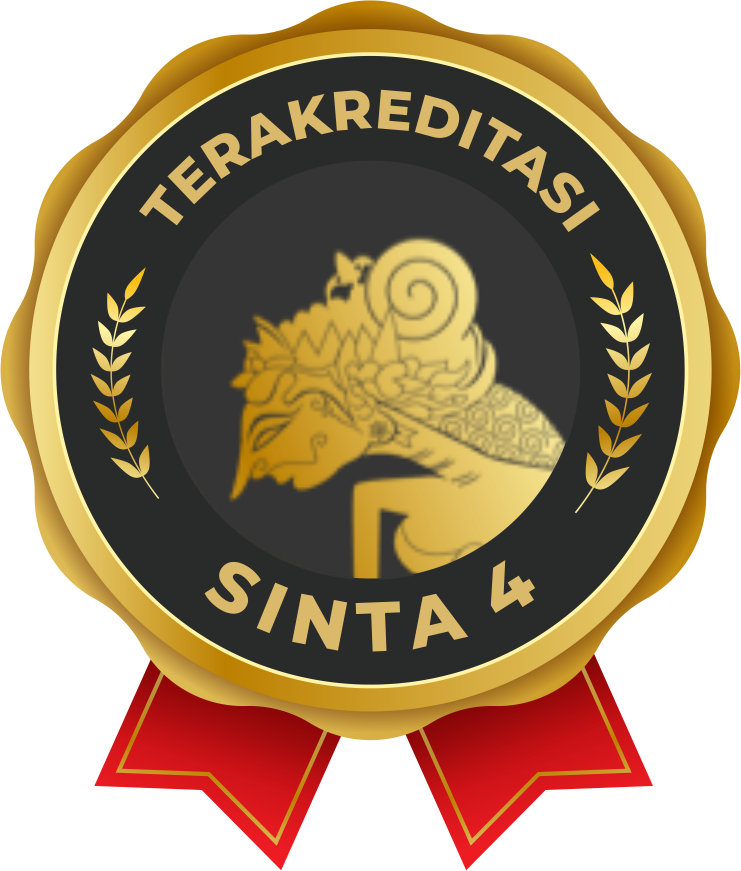The Mode of Storytelling in Tere Liye's Novel Tanah Para Bandit (A Conceptual Review of Gerard Genette's Narratology)
Main Article Content
Savitri Wulandari Gobel*
Herman Didipu
Zulkipli
The aspect of storytelling or storytelling elements has a very important role in the structure of a novel. Storytelling is the central element in a novel that has the ability to hook the reader's interest. In fact, it can be considered that the existence of a novel becomes unimaginable without the presence of narrative elements. With the elements of storytelling present, the novel becomes more dynamic and alive in the reading experience. By analysing this aspect, researchers can understand how the components of the story are interconnected and contribute to the overall reading experience. This research raises the issue of how the mode of storytelling in the novel Tanah Para Bandit by Tere Liye. The purpose of this study is to describe the mode of storytelling in Tere Liye's Tanah Para Bandit. This research applies Gérard Genette's narratology theory with qualitative descriptive method. The research data source comes from the novel Tanah Para Bandit by Tere Liye. Data collection techniques were conducted through reading and note-taking methods. Data analysis refers to Gérard Genette's narratology theory, which includes two stages: partial analysis and integral analysis. The results show that there is a mode of storytelling with the position of the narrator as a character in the story; internally, the narrator acts as the main character who tells the story. The focalisation technique used is internal focalisation, where the narrator only conveys information known by the characters.
Bagtayan, Z. A. (2021). Analisis sosiologis novel bukan pasar malam karya Pramoedya Ananta Toer. Ideas: Jurnal Pendidikan, Sosial, Dan Budaya, 7(1), 33–46.
Budianta, M. (2003). Membaca Sastra: Pengantar Memahami Sastra untuk Perguruan Tinggi. Indonesia Tera.
Didipu, H. (2018). Struktur Naratif Novel Osakat Anak Asmat Karya Ani Sekarningsih (Perspektif Naratologi Grard Genette). Aksara, 19(1), 241017.
Didipu, H. (2019). Teori naratologi Gerard Genette (tinjauan konseptual). Telaga Bahasa, 7(2), 163–172. https://doi.org/10.36843/tb.v7i2.58
Didipu, H. (2021). Kritik Sastra: Tinjauan Teori dan Contoh Implementasi. Yogyakarta: ZAHIR PUBLISHING.
Genette, G. (1980). Narrative discourse: An essay in method. Cornell UP.
Jambak, M. R., Masadi, M. A., & Hasanah, U. (2023). Fokalisasi pada Novel Ranah 3 Warna Karya Ahmad Fuadi: Kajian Naratologi Gerard Genette. JENTERA: Jurnal Kajian Sastra, 12(2), 219–230. https://doi.org/10.26499/jentera.v12i2.6019
Jeong, S.-B., & Chung, Y.-K. (2023). 나이브스 아웃>의 내러티브 시간 분석 An Analysis on the Narrative Time of Knives Out: the Utility and Limitation of Gérard Genette’s Narrative Theory. University K-Culture and Story Contents Research Center Story Contents, 2(1), 39–57. https://doi.org/10.56659/kcsc.2023.1.39
Kadir, H. (2013). Ekspresi Pandangan Dunia Kelompok Sosial Pengarang dalam Novel Laskar Pelangi Karya Andrea Hirata. LITERA, 12(1), 129–145. https://doi.org/10.21831/ltr.v12i01.1336
Kališová, R. (2024). Transgenerická naratológia: naratologická analýza poézie ako nová systematická teória lyriky. SLOVENSKÁ LITERATÚRA, 71(2), 179–189. https://doi.org/10.31577/slovlit.2024.71.2.8
Masie, S. R. (2010). Analisis Tokoh pada Novel Tak Putus Dirundung Malang Karya Sutan Takdir Alisyahbana (Melalui Pendekatan Dekonstruksi). Jurnal Inovasi, 7(1), 176–188.
Sartika, E., Kau, M. U., Asmagvira, A., & Ali, A. H. (2022). Analisis pendekatan psikologi sastra dalam Novel Re: dan Perempuan. Jurnal Bahasa, Sastra, Dan Budaya, 12(2), 1–8. https://doi.org/10.37905/jbsb.v12i2.15801
Wicaksono, A. (2017). Pengkajian prosa fiksi (Edisi revisi). Garudhawaca.
Zahro, A., & Indrastuti, N. S. K. (2024). Suara Naratif dalam Na Willa Karya Reda Gaudiamo: Perspektif Naratologi Gerard Genette. GHANCARAN: Jurnal Pendidikan Bahasa Dan Sastra Indonesia, 6(1), 53–70. https://doi.org/10.19105/ghancaran.v6i1.11929














